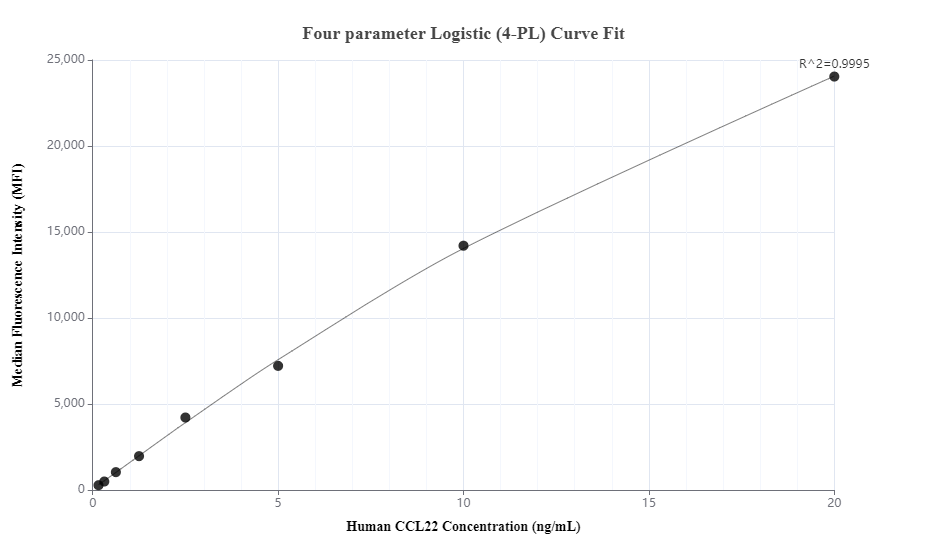Product Information
84370-1-PBS targets CCL22/MDC as part of a matched antibody pair:
MP01238-2: 84370-3-PBS capture and 84370-1-PBS detection (validated in Cytometric bead array)
Unconjugated rabbit recombinant monoclonal antibody in PBS only (BSA and azide free) storage buffer at a concentration of 1 mg/mL, ready for conjugation. Created using Proteintech’s proprietary in-house recombinant technology. Recombinant production enables unrivalled batch-to-batch consistency, easy scale-up, and future security of supply.
This conjugation ready format makes antibodies ideal for use in many applications including: ELISAs, multiplex assays requiring matched pairs, mass cytometry, and multiplex imaging applications.Antibody use should be optimized by the end user for each application and assay.
| Tested Reactivity | human, mouse |
| Host / Isotype | Rabbit / IgG |
| Class | Recombinant |
| Type | Antibody |
| Immunogen | Recombinant protein Predict reactive species |
| Full Name | chemokine (C-C motif) ligand 22 |
| Calculated Molecular Weight | 93 aa, 11 kDa |
| GenBank Accession Number | BC027952 |
| Gene Symbol | CCL22/MDC |
| Gene ID (NCBI) | 6367 |
| Conjugate | Unconjugated |
| Form | Liquid |
| Purification Method | Protein A purification |
| UNIPROT ID | O00626 |
| Storage Buffer | PBS only , pH 7.3 |
| Storage Conditions | Store at -80°C. |
Background Information
CCL22, also known as macrophage-derived chemokine (MDC), is a member of the CC chemokine family. It is primarily produced by myeloid cells such as macrophages and dendritic cells (DCs) under steady-state conditions. CCL22 plays a significant role in immune responses by regulating the migration of different subsets of leukocytes. It shares the same receptor, CCR4, which is predominantly expressed by Th2 cells, making CCL22 a key mediator in the development of Th2-dominant diseases such as atopic dermatitis and asthma. Elevated serum levels of CCL22 are observed in patients with these conditions. CCL22 is also expressed in several types of tumor cells and Foxp3+ regulatory T cells (Tregs), suggesting its involvement in attracting Tregs into the tumor microenvironment to evade immune attacks.



